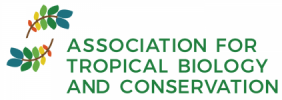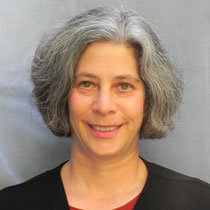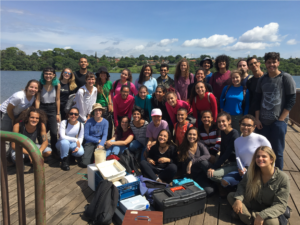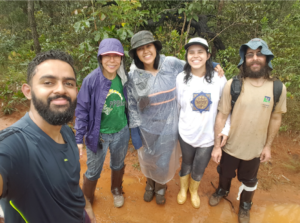Robin Chazdon
Robin is Professor Emerita in the Ecology and Evolutionary Biology Department at the University of Connecticut and part-time Research Professor with the Tropical Forests and People Research Centre at the University of the Sunshine Coast in Queensland, Australia. Dr. Chazdon has served as the Executive Director of the Association for Tropical Biology and Conservation and as Director of the NSF-funded Research Coordination Network PARTNERS (People and Reforestation in the Tropics), focused on understanding the socio-ecological drivers of reforestation in the tropics. She is a Senior Fellow with the World Resources Institute Global Restoration Initiative; a Senior Research Associate with the International Institute for Sustainability in Rio de Janeiro, Brazil; and adjunct professor at the University of Colorado.
1- What drew you to the field of tropical ecology?
I already knew when I went to university that I was a plant ecologist and field biologist. During my first week as a college student in Grinnell College I learned about the field study program in Costa Rica organized by the Associated Colleges of the Midwest. My academic advisor (LaVerne Durkee, a plant taxonomist who specialized in Acanthaceae) was scheduled to be the professor in residence for the program during the spring semester of my second year. He suggested I sign up for Spanish class, which I did. I enrolled in the program the following fall and spent from January-June 1976 in Costa Rica when I was 19 years old. This is when tropical ecosystems became part of my world view. I also fell in love with the people of Costa Rica. I was enthralled by Costa Rica’s geographic, social, and biological diversity, and became intensely motivated by the urgent need to apply ecological knowledge to conservation and sustainable land use.
2- What is the most exciting development in the field that has occurred during your career?
Advances in remote sensing have been the most exciting development, as this very rapidly developing technology has given us many ways of seeing earth and vegetation from above. It has also allowed non-scientists to “see” changes in forests, land use, and to quantify rates of deforestation and forest disturbance and recovery.
Advances in DNA technology have also been super exciting, as they provide a window into the evolutionary relationships of organisms as well as tracking seed dispersal in relation to seed parents.
3- What is your favorite memory of fieldwork?
There are so many, but one of my most memorable times was going out in the field to measure trees in our long-term secondary forest plots with my Costa Rican technicians, UConn students, and our kids Rachel and Charlie, all together. My husband, Rob Colwell, was busy with his own research there, but we were all at La Selva together for weeks at a time and could enjoy being together as a family while doing fieldwork. During these moments it felt like all the parts of my life harmonized in a beautiful way, which I am very grateful for.
4- What accomplishment by you and/or your research team are you most proud of?
I am proud of the rigorous and careful work we have done together to document how forests regrow in NE Costa Rica and to show how important this process is for conserving biodiversity, mitigating climate change, and enhancing people’s lives in human-modified landscapes. We also worked together with research teams in Mexico and Brazil and this collaboration has now grown into a large international research network. It is rewarding to see now how much field research is being conducted on the recovery and restoration of tropical forests all around the world.
5- What role did the ATBC play in your career?
I joined ATBC early in my graduate career and went to meetings every summer that I could (when they were all held in the US and it was ATB). I published my first paper in Biotropica before I started graduate school. ATBC played a very important role for me during my early development as a tropical biologist and in understanding what that identity and association meant both professionally and personally. At that time, ATB and OTS were closely aligned, and I have been involved in both organizations continuously during my career. The internationalization of ATBC has provided new opportunities and enabled new collaborations and friendships that I value greatly.
6- What would be your advice to a young scientist starting a career in tropical ecology and conservation?
Tackling the many problems (biodiversity crisis, climate crisis, socio-political unrest) we are facing now requires interdisciplinary teams and innovative approaches. Don’t go it alone. Work with a team, and develop your expertise with a broad understanding of the research gaps in your field. Join ATBC and become engaged with the Early Career Science Chapter (Link to SECSI). View ATBC as an extended community of experts who can help you and enrich your training and research opportunities.
Mercedes Bustamante
Mercedes is a Professor at the University of Brasilia and a member of the Brazilian Academy of Sciences. She specializes in the area of ecology of ecosystems in particular in themes related to changes in land use, biogeochemistry, and global environmental changes. She was co-coordinator of the chapter on “Agriculture, Forestry and Other Land Uses” of Working Group III: Mitigation of the 5th Report of the Intergovernmental Panel on Climate Change (IPCC). Internationally, Mercedes was a member of the Scientific Committee responsible for reviewing the United Nations Environment Program (UNEP) report on nitrous oxide (N2O), representative of Latin America in the International Nitrogen Initiative (2010-2013) and member of the Scientific Committee of the International Geosphere – Biosphere Program (IGBP) from 2007 to 2012 and the Biosphere – Atmosphere Program in the Amazon (LBA). In scientific and educational policy management, she has contributed as General Coordinator of Ecosystem Management and Director of Policies and Thematic Programs in the Ministry of Science, Technology and Innovation (2010-2013), Director of Brazilian Programs and Scholarships of Coordination of Personnel Development (CAPES, in Portuguese) and member of the Advisory Committee of the Ecology and Limnology of CNPq.
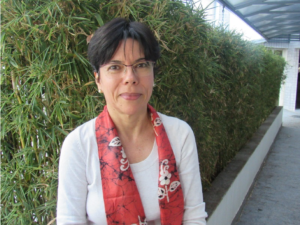
1- What drew you to the field of tropical ecology?
I did my undergraduate studies in Rio de Janeiro. In my early stages of scientific initiation, my interest was directed to the role of environmental stressors on the functioning of biological systems. During this period, I had the opportunity to know different ecosystems as the Brazilian Atlantic Forest, altitudinal grasslands, mangroves, and coastal zones. Also, at the time, my university managed an advanced campus in the Amazon region (city of Parintins), and in my third semester, I stayed there for a month. This internship was a life-changing experience. It was my first contact with the Amazon Biome and the local populations, and it awakened my interest in the diversity of social and environmental systems in Brazil. When I got my position at the University of Brasília in 1993, the fascinating Cerrados of Central Brazil allowed me to link my primary research interest in Plant Ecophysiology with Ecosystem Ecology. I focused, then, my projects on the biogeochemistry of tropical savannas linking biodiversity and ecosystem function.
2- What is the most exciting development in the field that has occurred during your career?
I would highlight the Large Scale Biosphere-Atmosphere Program in the Amazon (LBA), where I acted as principal investigator of different projects, coordinator of the Training and Education Committee, and later coordinator of the Scientific Steering Committee. The LBA was one of the most significant international scientific cooperation (involving scientists of different countries and knowledge fields). Its design included the study of the interactions between the Amazonian ecosystems, atmospheric and climate conditions on regional and global scale addressing effects of land-use changes, and global climate change on the biological, chemical, and physical functioning of the forest and its sustainability. The main results were summarized in the book Amazonia and Global Change (eds. Keller, M.; Bustamante, M.M.C., Gash, J., Dias, P.S.). LBA research promoted interdisciplinary science and the training of a new generation of young environmental scientists that today help to frame local and national development and conservation issues.
3- What is your favorite memory of fieldwork?
It's hard to choose just one, but I have great memories of my undergraduate and graduate teaching activities in field classes.
I am still responsible for the first Ecology course for undergraduate students in Biology at the University of Brasilia, and I do with them the first field trips. It is always fascinating to see them discover in nature what they come up with in theory in classrooms.
4- What accomplishment by you and/or your research team are you most proud of?
Over the 27 years at the University of Brasília, the collaboration with other scientists was fundamental to sediment our research group's trajectory. In particular, I highlight the opportunity to work on the Fire Project, which allowed us to evaluate the impact of prescribed burning on the cycling of carbon and nutrients and greenhouse gas emissions into the atmosphere. Through these research activities, we described and quantified the compartments and fluxes of carbon, nitrogen, and phosphorus in the Cerrado and the implications for aquatic systems and the atmosphere (greenhouse gas emissions). We evaluated the responses of Cerrado ecosystems to the impacts of nutrient deposition in a long-term experiment that started in 1998 and is still in operation. Several graduate and undergraduate students participated in this project.
The advance of the understanding of Cerrado ecosystems' functioning has also boosted our research on the interactions between biodiversity and ecosystem processes. In particular, the efforts resulted in the deepening of the knowledge of the rich Cerrado soil microbiota. The research activities of our group also provided significant subsidies for the construction of public policies (such as the National REDD+ Strategy) and the preparation of National Greenhouse Gas Emissions Inventories.
The results obtained made it possible to insert the issue of Cerrado conservation from the perspective of Global Environmental Change, including the dissemination in international forums.
5- What role did the ATBC play in your career?
The work of the ATBC has always been a source of inspiration enabling scientific exchange and dissemination in the area of Tropical Ecology. The different initiatives of communication and dissemination of conservation practices were also fundamental to broaden the horizons by connecting diverse communities.
6- What would be your advice to a young scientist starting a career in tropical ecology and conservation?
Undoubtedly, these are challenging times for young scientists, especially those dedicated to Tropical Ecology. While we have made considerable progress in understanding the drivers of change in ecosystems, we still need to propose solutions that ensure conservation and sustainable use. Besides, the window of opportunity to implement solutions is narrowing with global change. Young researchers today need to develop not only the conceptual background and the use of new analysis tools but also the capacity to establish an open dialogue with other areas of knowledge and with different stakeholders. Communicating science clearly and placing it in context of policies will be fundamental.
